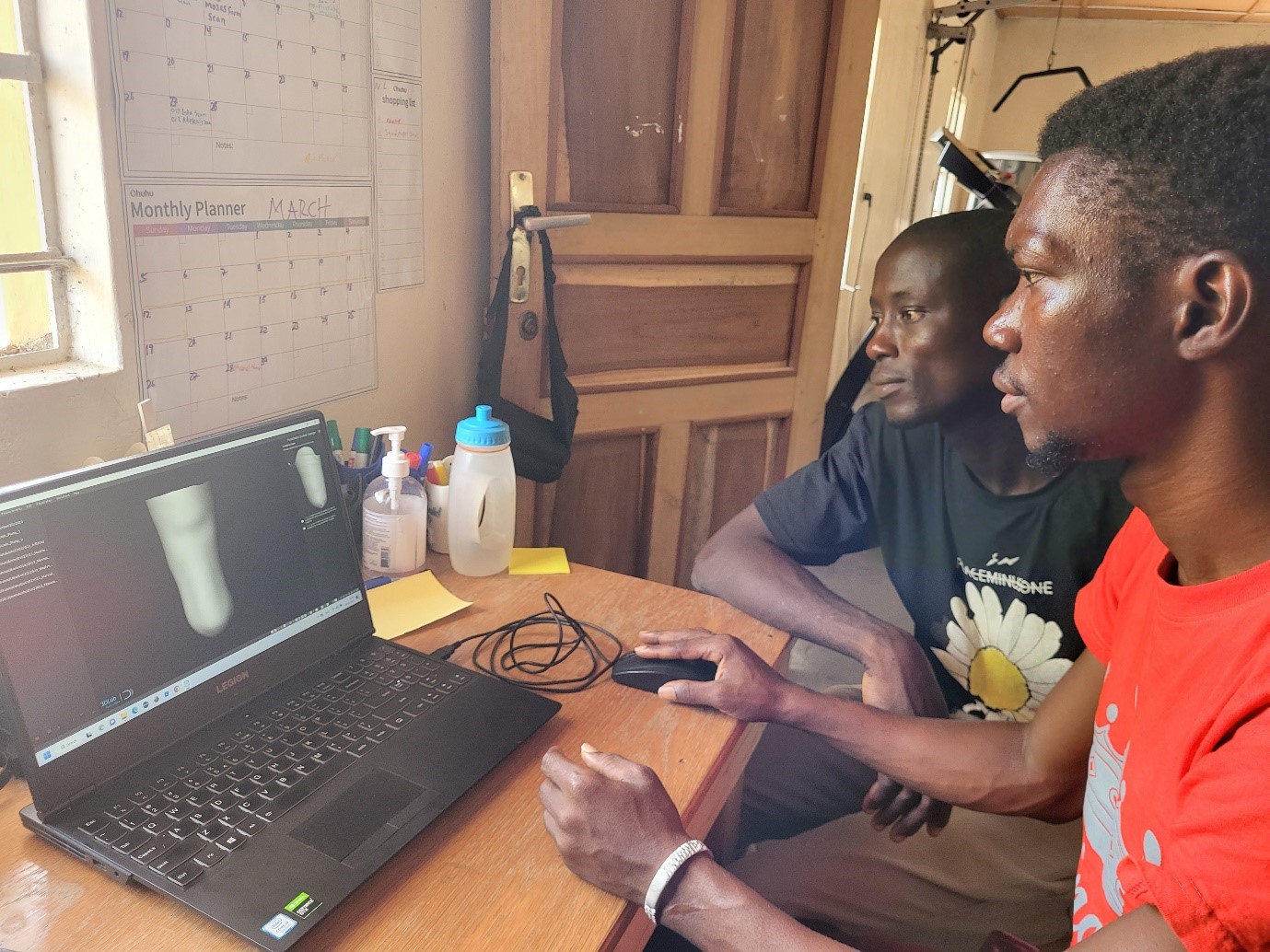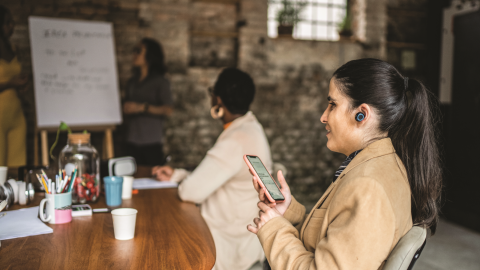The opportunity for assistive technology
People with disabilities often do not have access to the assistive technology (AT) they need, despite an increasing demand for it. An estimated 1.3 billion people will need assistive technology (AT) by 2050. High prices, limited availability, internet connectivity, maintenance needs, and lack of localization are just some of the friction points in accessing this critical technology.
To maximize the opportunities for AT, we must consider providing alternatives, ensuring adaptable solutions that meet people’s needs, increasing availability and affordability so AT is widely available and at affordable price points. We also need to raise awareness of this technology and its benefits as well as legislation and other forms of support (source: Steve Hodges, Ability Summit, Accessible Technology within Reach: how to break down the barriers to accessing Assistive Tech – YouTube).
Recognizing the vast opportunity and importance of this space, our latest Microsoft Accessibility Innovation grants focus on low-cost AT in low- and middle-income countries.
Making the case for Alternatives: new methods of addressing the need for prosthetics
An example of this alternative approach is the use of 3D printing to make prosthetics. The Worldwide Health Organization estimates that 0.5% of the world’s population needs prostheses, however, a staggering 95% of those who need them lack access. Common challenges are material availability, workflows dependent on the skills of the prosthetists and more.
To address these challenges, a joint venture between the 3D lab at the Radboud University Medical Centre, based in the Netherlands, and the foundation 3D printing in developing countries started a pilot non-profit 3D lab in 2018 in the Masanga Hospital in Sierra Leone to produce prostheses for those who need them.
The team applies computer-aided design (CAD) and computer-aided manufacturing (CAM) to produce low-cost prostheses. Using CAD-CAM techniques, the production process is consistent and faster. The entire process can be automated by following a standardized design workflow including Artificial Intelligence (AI) algorithms for patient-specific socket prediction. As a result, socket fitting becomes less dependent on the individual prosthetist’s skills and experience, thus increasing successful prosthetic fitting rates.

Wanting to scale this alternative way of producing prosthetics, the team is going to develop an easy-to-use 3D Pro Software which can facilitate local staff with basic IT and prosthetic knowledge to independently accomplish prostheses. The software will include the full prosthesis-making workflow for two types of leg prostheses: measurement using a 3D scanner, designing, 3D printing, assembling, and statical alignment. This technology can contribute to improving the quality and scalability of prosthetics in low- and middle- income countries through empower people with knowledge of both prosthetics and IT to be able to independently produce prostheses. Furthermore, an additional goal is to employee people with disabilities part of the workforce whenever possible, a initiative that is supported by the Ministry of Rehabilitation in Sierra Leone.
More details on: 3D Sierra Leone
Making the case for Adaptability: communication for everyone
Around 2 million people around the world use augmentative and alternative communication (AAC) according to the American Speech Hearing Association (ASHA). However, it is likely that the number needing this type of technology is much higher. Inspired by the lived experience of their co-founder, as well as traditional communication boards used in speech therapy, CBOARD, based in Chile, has built AAC tech that integrates AI to enhance the accuracy and speed of the communication process, enabling users to construct sentences more efficiently and effectively.

There is a significant need for this technology, with limited affordable and accessible communications tools in the market. AAC devices are often expensive, limiting access. By developing a digital tool that utilizes AI, CBOARD can provide a tool that provides adaptability and cost-effectiveness especially to those in underserved communities.
By leveraging Azure Neural Text to Speech as well as translation services, CBOARD aims to offer their technology in more languages and grow their footprint in Asia as well as increase usage in LATAM.
Making the case for availability: the one-dollar hearing aid
Globally, 230 million people experience age-related hearing loss (ARHL) with the majority living in low- and middle- income countries and lacking access to hearing aids due to affordability. Even though costs for microprocessors and electronics have decreased steadily in the last 30 years, the prices of hearing aids have not reduced. WHO estimates that the current production of hearing aids meets less than 10% of the global need.
A team lead by Prof. Saad Bhamla at Georgia Tech in the US is aiming to develop an over-the-counter (OTC) hearing aid, costing roughly $1 each. Their design is focused on local manufacturing and assembly, potentially by people with disabilities to ensure large social impact and empowerment. While their production price can fluctuate due to chip shortages as well as supply-chain issues, the team wants to achieve an ambitious low cost leveraging open mass-manufactured electronic components and focusing the device on a preset configuration for ARHL. Furthermore, by co-creating with the community, the device was designed to be body-worn, to be friendly to older adults, as many patients have trouble handling the small in-the-ear hearing aids. Their design represents an opportunity to change the value proposition of hearing aids.
Clinically validated hearing aids are prohibitively expensive for low-income populations. Current hearing amplifiers currently in the LMIC market consistently have poor acoustic quality and do not provide the high-frequency gain necessary for older adults with ARHL and amplify low-frequency sounds, which may be harmful. By working with the community in Malawi, the team aims to development of an open, accessible, and affordable hearing aid for people facing age-related hearing loss in low and middle-income countries.

Making the case for awareness: demystifying the use of assistive technology
AccessTech Innovation, based in Nigeria, is aiming to address the lack of awareness and access to AT, including the shortage of digital skills for the blind and low vision community. Through an Assistive Technology Experience Center they want to empower the community to try quality AT products before having to purchase, allowing them to choose their preferred solutions and importantly by providing on-demand digital skills training, as well offering AT maintenance services.
Without access to AT and knowledge on usage, those who are blind and low vision in Nigeria has access barriers to education, social activities, and are not able to live independently. AccessTech Innovation is co-founded by Opeolu Akinola and Emmanuella Akinola. Opeolu pulls from his lived experience, having lost job opportunities due to the lack of availability of AT tools. His commitment and dedication is to those going through similar journey, having designed the first computer training curriculum for those who are bind in Nigeria and worked as a pioneer instructor at the first computer training center for the blind in the country 23 years ago. Their ambitious goal is to support 4 million people in Nigeria have access to AT and enhance quality of education and foster social integration.








